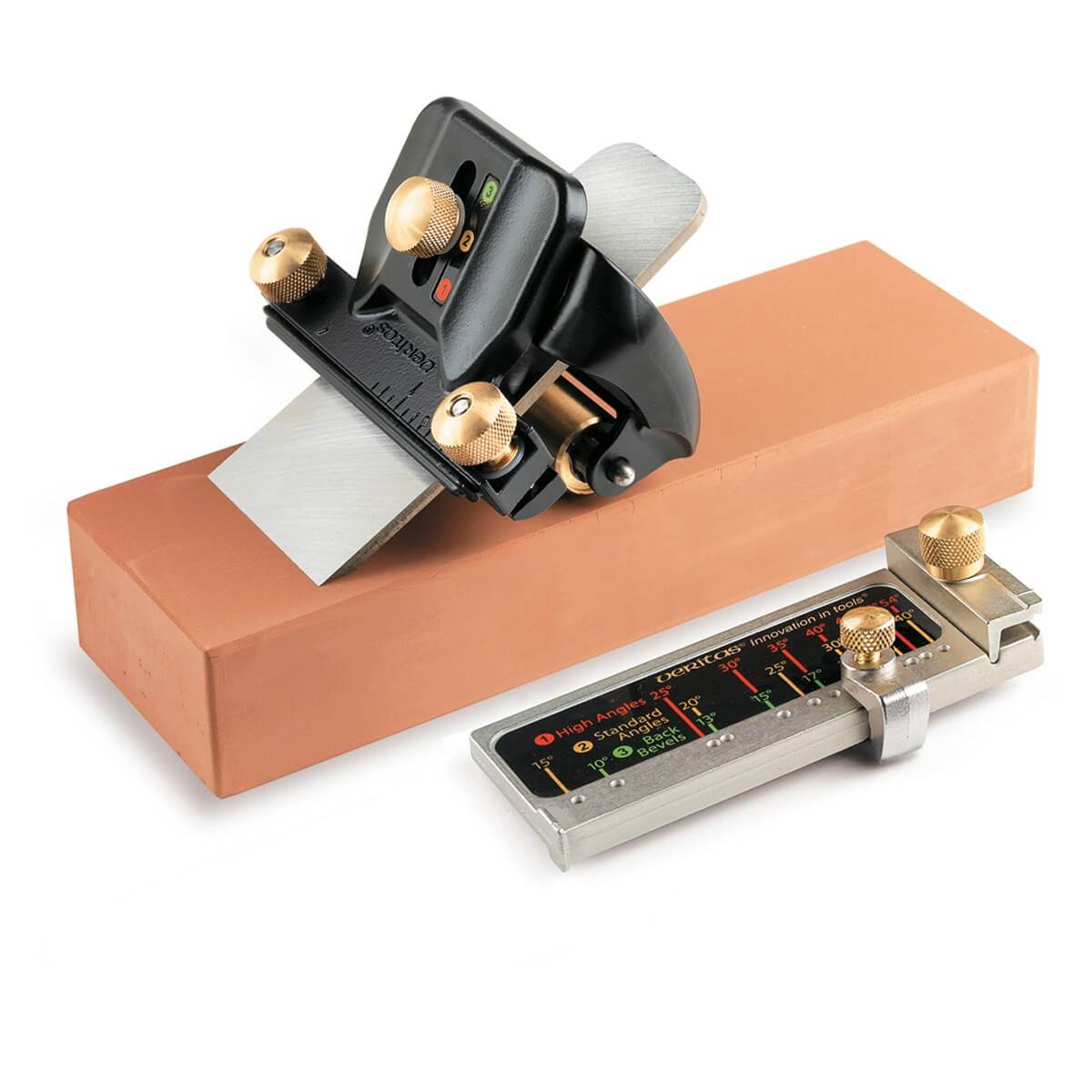
If you’re a water-stoner, you probably spent most of the long weekend furiously rubbing your chisels back and forth on ‘old faithful’ trying to reset the edge.
It’s a time consuming, arduous process, but there’s a far easier way. The edge of any cutting tool can be shaped and sharpened quickly and safely by employing an electric grinding machine.
This approach can frighten people because grinding is an abrasive process that generates heat, which can potentially damage your tool steel’s temper. This was a problem of the past, but in the 21st century there’s now equipment available that solves the heat problem, while still sharpening at an express pace.
SLOW SPEED BENCH GRINDERS
Unlike normal bench grinders with operating speeds of 3,500 RPM or more, slow speed bench grinders feature speeds of 1,400 RPM. These slower speeds greatly reduce the cutting wheel’s potential to heat up steel via friction.
This ‘light touch’ design is the most effective way of reducing heat, but slow speed grinders also feature a soft, coarse-grain grinding stone. These stones are usually white or blue and made of bonded aluminium oxide. The coarse nature of the stones - usually 60 - 120 grit - will remove steel quickly without overheating.
The soft bonds between the stone’s particles allow the stone to disintegrate during sharpening, constantly exposing fresh sharp cutting particles. This friability further cools the wheel and makes it easy to dress when it loses its shape.
WET STONE GRINDERS
Now if after all of this you’re still concerned of overheating your tools, the Wet Stone Grinder is a one-stop solution for tool sharpening.
Wet Stone Grinders use water to lubricate and cool a large, wide, slow-spinning grinding stone, leaving no risk of overheating your metal or compromising its temper whatsoever. These machines have a few extra-advantages: not only does the wider grinding stone simplify sharpening chisel and plane blades, but the sides of the stone flatten the backs of cutting blades as well.
High-quality grinders also feature a leather strop to touch up the cutting edge while you’re working, keeping the cuts you make crisper, cleaner and more precise.
THE IMPORTANCE OF SHARPENING JIGS
Besides a slow running grinder and cool cutting wheel, to sharpen your tools effectively you’ll require a few jigs to accurately present the tool and set the angle.
Grinders usually come with a set of tool rests, but depending on your specialty, it’s often worth investing in a specific tool-rest kit. These ensure that you’re cutting on the ideal angle, which not only preserves the life of your tools, but enhances the accuracy of your work.
These jigs are numerous and fairly cost-effective: there are bench-grinder jigs purpose-built for skews, straight grinding and woodturning tools, while you can buy wet stone jigs for practically anything - carving tools, plane blades, knives, scissors, axes, woodturning tools – you name it.
THE MACHINE SHARPENING CONTROVERSY!
In their precious free moments between grinding away at flat oil and water-stones, purists argue that the concave curve created on the primary bevel is a fundamental flaw in the use of round grinding stones.
The suggestion is that a curved bevel interferes with the cutting action of the blade, causing it to dig in when using carving tools. Others suggest that due to its minute size, the curved bevel is irrelevant and that adding a secondary cutting bevel to the cutting edge eliminates any potential influence of the curved primary bevel.
It’s worth taking the time to troll through online chats – there’s countless opinions on this topic and varying degrees of hysteria on the best shape for a cutting edge. Ultimately, the best method is the one that suits your woodworking.
If grinding machines assist you in achieving the results you desire, then that’s the system for you. If you love the time-honoured simplicity of a bench water stone, a diamond plate and a bit of elbow grease, we don’t blame you.
What’s certain is that sharp tools make for easier, more accurate and more enjoyable woodworking – they require much less effort to use and consistently produce better results. Whatever method gets you to the finish line, the most important thing is to maximise the time you spend woodworking!